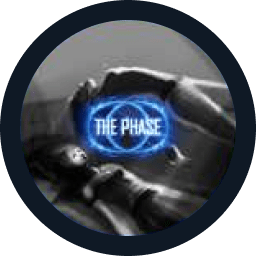Many people, upon waking and remembering their dreams, have felt regret that the events unfolded randomly. Many have wondered: is it possible to control your dreams and consciously steer them rather than being a passive observer of unpredictable scenes? Often, memories of dreams quickly fade under the weight of daily responsibilities. Yet the idea of controlling dreams continues to intrigue us, especially if those dreams are particularly disturbing or thrilling.
Is It Possible to Lucid Dream?
Who hasn’t dreamed of getting rid of unpleasant dreams or turning a dream into an exciting adventure guided by your own thoughts? Though it may seem unlikely, many dreamers have managed to “wake up” within their dreams and change their course at will. In such moments, they realized that lucid dreaming is possible and tried to recreate that experience.
For others, the question of whether lucid dreaming is possible fades amidst the events of real life. But then, a vivid dream is recalled in full detail one morning, reigniting the desire to alter it. This often renews the person’s search for information, methods, and ways to consciously control dream events.
At this point, the question naturally arises again: is it possible to lucid dream, and if so, how is lucid dreaming possible in the first place?
Is Lucid Dreaming Possible for Everyone?
The existence of lucid dreams is a scientifically proven fact (you can read more about this topic in this article). But the real question is this: Is lucid dreaming possible for everyone? Theoretically, yes. But practically, no, not everyone can achieve it. Some people succeed easily and unexpectedly, while for others, nothing happens despite their efforts.
So, what’s the difference? Is it a natural ability? A personal predisposition? Environmental factors? Social status? All of these factors may influence a person’s ability to realize they are dreaming. While many people occasionally become aware while dreaming, this does not guarantee they can regularly and effectively control their dreams.
However, with focused training, self-discipline, and control, even those who believe they don’t dream can learn to have lucid dreams. The ability to realize you are dreaming largely depends on the effort you put in rather than natural talent. Of course, discipline and intent alone aren’t enough for regular practice. A clear understanding of what steps to take to achieve intentional dream awareness is crucial. That’s where lucid dreaming techniques come into play.
Techniques for Lucid Dreaming
There are many tips on how to achieve lucid dreaming, but the most reliable advice comes from practitioners who regularly, perhaps even daily, experience lucid dreams and share their experiences in a clear, straightforward way without weaving mystical or esoteric elements into their explanations.
For a more detailed explanation of lucid dreaming methods and practices, you can read Michael Raduga’s book The Phase: Breaking the Illusion of Reality, or you can enroll in his school’s courses.
There are three main methods for achieving dream awareness, as described below.
Direct Method of Lucid Dreaming
This approach involves transitioning into a lucid dream directly from wakefulness “upon falling asleep” while maintaining consciousness. This method is unusual. Although it seems like the most convenient method at first glance, beginners should not expect it to work immediately. Several failed attempts may lead beginners to experience disappointment and the urge to quit.
Indirect Method of Lucid Dreaming
This method is simpler and more accessible than the direct one. The indirect method allows you to enter a lucid dream after you have already fallen asleep, slept for some time, and then partially or fully awakened. This technique uses natural awakenings as an opportunity to re-enter a dream while maintaining awareness.
To practice the indirect method, a person needs to sleep for some time first. This preliminary dream helps the person control subsequent dreams and maintain lucidity in them.
Dream Awareness Method
This technique focuses on developing the ability to become aware during a dream. Spontaneous dream awareness happens to many people, but it is not a method; it is just an indicator of the potential for awareness and control over dreams. Random lucidity might seem like the most accessible method since it appears to come naturally.
However, the results of spontaneous lucid dreams are often vague and not clearly defined. Awareness may be partial and brief, preventing full control over the dream.
To use this method regularly and get reliable results, one must begin practicing awareness in their daily life. It might turn out that more effort is required for training than initially expected. If you’ve been asking yourself, how is lucid dreaming possible, developing this kind of consistent awareness might just be the answer.
In most cases, the indirect method of lucid dreaming offers more vivid and specific results. However, this is not a hard-and-fast rule.
Everyone can choose the method that suits them best and practice lucid dreaming in the way that they find the most comfortable. The results depend entirely on individual effort.
FAQ
Recommended reading
How to learn to have lucid dreams
Are lucid dreams real and how to learn to be aware of them
Does lucid dreaming really exist?









